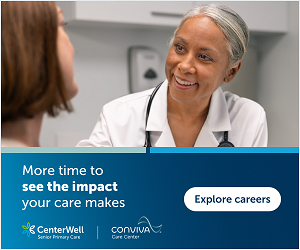There are few things more satisfying than seeing young people and older adults interacting with each other and building an effortless sense of community and belonging. Robust communities include all ages. But such spaces need help to develop and thrive.
Global Intergenerational Week, a celebration of the power of bringing together younger and older people for the benefit of all, has completed its third year. Started in Scotland, this positive initiative has spread worldwide, and we are part of it here in Canada.
Intergenerational connections lead to the creation of empathy, which reduces loneliness for both young and old and addresses ageism, which is harmful to health and well-being.
We need to foster more intergenerational connections across the country.
We already have spaces where older and younger generations live together. They are called Naturally Occurring Retirement Communities (NORCs). NORCS are geographic areas—generally apartment buildings or condominiums—where at least 30 percent of residents are older adults, mostly women.
In Ontario, there are approximately 2000 such buildings, and in Toronto alone, there are 489 NORCs.
More older adults live in NORCs than in retirement and long-term care homes combined, making NORCs an important yet largely ignored opportunity to create age-inclusive communities that support healthy aging at home.
These spaces have large proportions of older adults, but they also have young residents.
While much of the attention given to NORCs (when they are recognized at all) has focussed on the value of reorganizing services around these high-density clusters where older adults already live and want to stay, an under-recognized advantage is that they are where older and younger people live together. NORCs provide the ability to build intergenerational connections that are so beneficial to health and well-being.
You might think of loneliness as primarily impacting older adults, but it is common among younger people, too; new data show young people aged 15 to 24 are the loneliest group in Canada. Chronic loneliness is known to have a detrimental effect on health, contributing to the development of chronic conditions like diabetes and dementia and robbing us of the joy of shared experiences.
Social connections are key to reducing loneliness.
NORCs provide opportunities for teenagers to meet with older adults and get career advice and mentorship; opportunities for older adults to help young families with childcare; opportunities for younger adults to share their technology expertise with those who want to improve their phone and computer skills – and so much more.
Unfortunately, despite the proximity of intergenerational neighbors, little opportunity or space is set aside to facilitate the forging of much-desired social connections and, with them, a sense of belonging.
That’s why the Women’s Age Lab at Women’s College Hospital, along with University Health Network’s NORC Innovation Centre and Barrie Housing, is developing and evaluating a NORC program model that promotes community building, intergenerational connection, access to care and offers a vision for creating vibrant and healthy communities that are inclusive and accessible to all.
The World Health Organization has created a Global Campaign to Combat Ageism and identified intergenerational connections as one of its three key recommendations to combat discrimination based on age. NORC programs can be an important part of the solution.
Creating opportunities for people to get together, from yoga classes and community gardening activities to simply sitting and having coffee with other people, can have invaluable benefits for residents of all ages.
NORC programs play a pivotal role in working with local communities to prioritize their interests and needs. They act as catalysts for residents who desire change, from challenging the way care is traditionally organized and delivered to dispelling outdated notions of aging to fostering vibrant, age-inclusive communities within our urban fabric.
By enhancing NORCs, already home to so many older and younger people, with activities that lead to social interaction, we can improve the social connections that reduce loneliness while addressing the all-too-pervasive impact of ageism.
Paula Rochon is a geriatrician. Rachel Savage is an assistant professor of health policy, management, and evaluation. Jen Recknagel is a design researcher.






















![It's OK to want a different life in medicine [PODCAST]](https://kevinmd.com/wp-content/uploads/Design-3-190x100.jpg)



